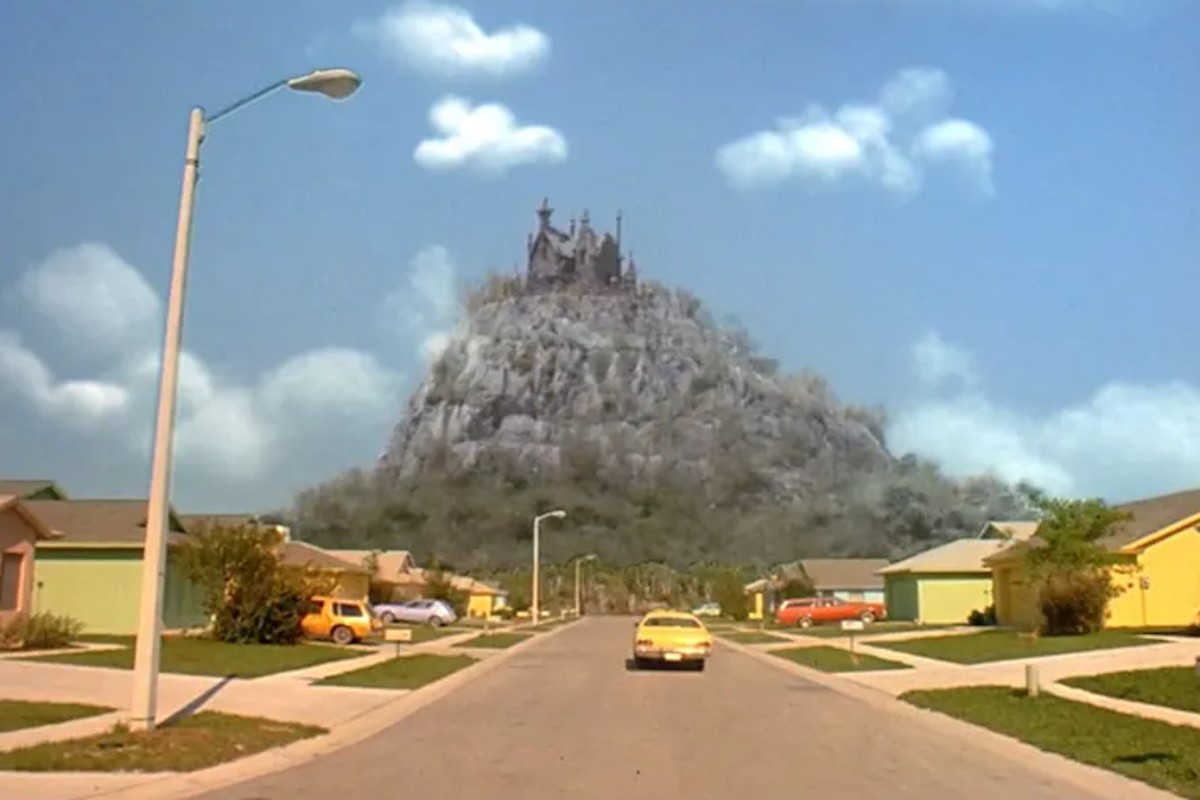
Vincent lives with his sister’s cats and dogs, but he’s more of a bat and spider fan. His pretty house may be in a lovely neighborhood, but he wants to fill it with horrors: he dreams of turning it into a macabre and mysterious home where he can read Edgar Allan Poe and work on his experiments to his heart’s content.
Vincent is just seven years old, and the star of Tim Burton’s first short film. The movie also represents the director’s childhood. It tells the story of an introverted boy; a dreamer of monsters and cemeteries who didn’t fit into his tranquil neighborhood in Burbank (California).
Tim Burton movies are populated by curious characters who travel between the worlds of the living and dead, coexisting with the grotesque and coming up against the supernatural. But there are other key actors that introduce us to the stories and influence the plot lines: the buildings.
The home of Edward Scissorhands
Edward is a young man with scissors for hands. But this is perfectly normal in the castle in which he lives. He wanders the corridors, goes up and down the dusty stairs and tends to the garden. One day, he discovers things are very different outside the confines of his hill, and he thinks he has finally discovered his place in the world.
The architecture of Tim Burton’s universe is influenced by Gothic literature and architecture. His castles—where people live very lives different to those on the outside—are fully loaded with mysteries, crypts, abandoned gardens and dark corridors.
Edward Scissorhands lives in a castle with soaring pointed towers on a gray, gloomy hill surrounded by a rusty, vertiginous fence. The contrast between the castle and the housing complex at the foot of hill is stark: there, a collection of pastel-colored family homes and well-kept gardens predominates. Life is orderly, with no room for chaos.

Shot from the Edward Scissorhands movie.
But as Tim Burton shows us, looks can be deceiving—just as he experienced in his own childhood. The most hostile environments aren’t always found in the gloomiest buildings.
The shadows of Halloween City
When Jack Skeleton discovers Christmas City, the lights and music leave him spellbound, and he decides it’s time to bring some Christmas spirit into his home. But Halloween City isn’t ready for this kind of party: there, everything is designed to celebrate death and terror.
The architecture and layout of Halloween City features uneven streets and labyrinths, with wonky walls, sinister houses, rickety fences and crooked staircases. It shows another clear influence of the Tim Burton aesthetic: German expressionism. This avant-garde movement emerged in Germany in the early 20th century, and is characterized by a very subjective, twisted and distorted expression of reality.
German expressionist film uses light to create long shadows and irregular lines, giving rise to uneasiness and discomfort. In Halloween City in The Nightmare Before Christmas, the spaces are tilted, untidy, decomposed and disconnected, conjuring up the perfect ambience for its inhabitants’ ultimate goal: celebrating the feast of the dead.
Batman is another Tim Burton movie in which the influence of German expressionism is clear to see. Dominated by crime, Gotham City is always shrouded in mist and darkness. Light and shadow turns buildings into spaces brimming with tension. And Gotham City is also full of statues—a pervasive feature of Gothic architecture—creating a feeling of fear in the Joker’s terrifying playground.
A changing building in Beetlejuice Beetlejuice
In Beetlejuice Beetlejuice , Tim Burton once again places his mansion high on a hill. The town’s people point to the property, calling it ‘the ghost house’. This tall white building combines classic Victorian style with a more modernist aesthetic, transporting us back to the suburbs we’ve seen so many times in movies and series from the United States.
But in this house, nothing is as it seems. The architecture shifts in the same manner as its inhabitants, and things change depending on the perspective from which it’s viewed. The architecture gives rise to a magical place where the worlds of the living and dead come together. A place where peace and quiet can quickly turn into something menacing.
At first glance, the house in Beetlejuice Beetlejuice (the sequel to Beetlejuice, also directed by Tim Burton in 1988) is nowhere near as frightening as the houses in Frankenweenie or The Corpse Bride, nor as impressive as Willy Wonka’s factory in Charlie and the Chocolate Factory. But, as the director has been showing us for years, in his movies (and his imaginary universe) nothing is as it seems.





There are no comments yet